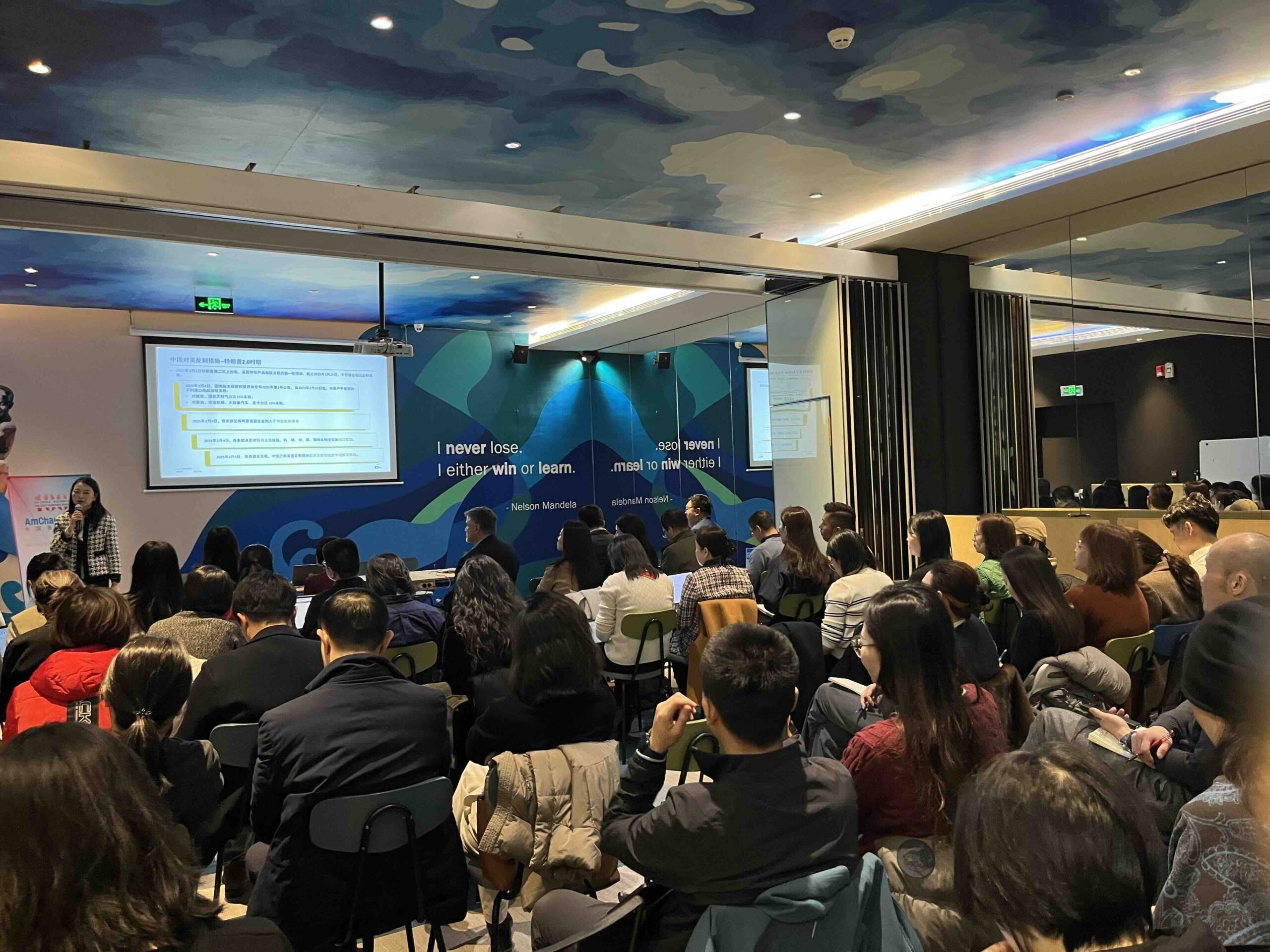On February 26, AmCham China’s Tax Committee hosted an event on the latest developments in US-China tariffs and their impact on foreign businesses. The event brought together industry experts to analyze policy changes, explore business adaptation strategies, and offer insights into future trade negotiations.
The event was set against the backdrop of new tariff measures announced earlier in February. On February 1, US President Donald Trump signed an executive order imposing a 10% tariff on all goods from China and a 25% tariff on goods from Canada and Mexico. After Canada and Mexico retaliated with their own tariff hikes, negotiations led to a temporary suspension of the tariff increases on these two countries. However, the tariff increase on China took effect as scheduled, prompting China to respond with its own countermeasures.
On February 4, China’s Tariff Commission of the State Council issued Tariff Commission Announcement No. 1, 2025, imposing a 10% or 15% tariff on certain US imports, including liquefied natural gas and agricultural machinery. As a result, export enterprises on both sides are now facing higher tariff costs, adding new complexities to trade operations. While a spokesperson for the President Trump acknowledged ongoing negotiations to prevent further escalation of the trade war, the business community remains concerned about the impact on supply chains, tax planning, and long-term market stability.
Opening remarks were provided by Jessia Sun, of EY and one of the Co-Chairs of the AmCham China Tax Committee, who emphasized the importance of adaptability in light of these changes. This was followed by an in-depth policy analysis by Tina Zhang and Shirley Shen, Partners at EY, who provided a detailed breakdown of the tariff adjustments, potential exemptions, and compliance strategies for businesses.
In the second session, Shu Tian, Vice President at the Branch of Free Trade Ports of China Association of Port-of-Entry, outlined practical business adaptation strategies, including supply chain diversification, tax optimization, and risk management approaches. He stressed the need for companies to assess their exposure to tariffs and explore alternative trade routes and sourcing options.
The event wrapped up with a Q&A and open discussion, featuring insights from Shu Tian, Jessia Sun, Shirley Shen, and Tina Zhang.
As an off-the-record event, this session provided AmCham China members with valuable, unfiltered insights into the shifting trade landscape. For more information on upcoming AmCham China Tax Committee events, please contact Ada Yang.

